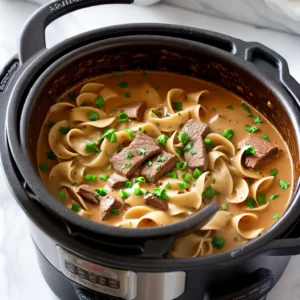When it comes to pizza, many of us can’t resist a slice or two. But have you ever wondered how long you can safely leave pizza out before it becomes a risk to your health? In this article, I will delve into the topic of pizza safety and provide you with essential storage tips to ensure that your favorite food remains delicious and safe to eat.
Pizza is a beloved food that, unfortunately, can also become a breeding ground for bacteria if not handled properly. To maintain food safety, it’s crucial to consider the storage temperature and duration. The temperature danger zone, which ranges from 40°F to 140°F, is where bacteria can thrive and multiply rapidly on pizza. Leaving pizza out overnight or for more than 2 hours (or 1 hour if the temperature is above 90°F) increases the risk of foodborne illnesses. Symptoms such as gastrointestinal issues and flu-like symptoms can occur if contaminated pizza is consumed.
Key Takeaways:
- Leaving pizza out for more than 2 hours (or 1 hour if above 90°F) increases the risk of bacterial growth.
- Foodborne illnesses may occur if contaminated pizza is consumed.
- Refrigerate leftover pizza within 2 hours and consume it within 3-4 days to minimize risk.
- Properly reheating pizza to an internal temperature of 165°F can help ensure food safety.
- Understanding the factors that affect pizza shelf life, such as moisture content and acidity levels, can help determine proper storage techniques.
Why Is It Unsafe to Eat Pizza That Sat Out Overnight?
Leaving leftover pizza out overnight can pose serious health risks due to bacterial growth. When pizza sits at room temperature for an extended period, it enters the temperature danger zone of 40°F to 140°F, which is ideal for bacteria to multiply rapidly. Harmful bacteria such as Staphylococcus aureus, E. coli, and Campylobacter can contaminate the pizza and lead to foodborne illnesses.
Bacteria on pizza may not show visible signs of spoilage, making it difficult to determine if it is safe to eat. Consuming pizza that has been left out overnight increases the risk of food poisoning, with symptoms including gastrointestinal issues and flu-like symptoms. Individuals with weakened immune systems, children, pregnant women, and older adults are more susceptible to foodborne illnesses and should seek medical attention if symptoms occur.
It is important to refrigerate leftover pizza within 2 hours to minimize the risk of bacterial growth and foodborne illnesses. Thoroughly reheating the pizza to an internal temperature of 165°F can help ensure food safety.
Table: Common Bacteria That Can Grow on Pizza Left Out Overnight
| Bacteria | Health Risks |
|---|---|
| Staphylococcus aureus | Can cause food poisoning with symptoms such as nausea, vomiting, and diarrhea. |
| E. coli | Can lead to severe gastrointestinal issues and potentially life-threatening complications. |
| Campylobacter | Can cause abdominal pain, fever, and diarrhea, which may be bloody. |
How to Safely Store Leftover Pizza
- Refrigerate leftover pizza within 2 hours of being cooked or delivered to prevent bacterial growth.
- Place the pizza in an airtight container or wrap it tightly with aluminum foil or plastic wrap to maintain its quality and reduce the risk of contamination.
- Consume refrigerated leftover pizza within 3-4 days.
- If freezing the pizza, it can be eaten indefinitely but is best consumed within 3 months for optimal flavor and texture.
- When reheating leftover pizza, ensure it reaches an internal temperature of 165°F to kill any remaining bacteria.
How Long Can Pizza Sit Out Before It Becomes Unsafe to Eat?
When it comes to leaving pizza out at room temperature, there is a time limit before it becomes unsafe to eat. Pizza should not be left out for more than 2 hours (or more than 1 hour if the temperature is above 90°F). During this time, the pizza is in what is known as the temperature danger zone, which is between 40°F and 140°F. The temperature danger zone is the range in which bacteria can multiply rapidly, increasing the risk of exposure to harmful foodborne pathogens.
The risk of bacterial growth on pizza increases with every passing minute it sits out in the temperature danger zone. Bacteria can double in number in as little as 20 minutes in this temperature range. Leaving pizza out for an extended period provides an ideal environment for these bacteria to thrive. As the bacterial population grows, so does the risk of foodborne illnesses.
To minimize the risk of exposure to harmful bacteria and foodborne illnesses, it is important to refrigerate leftover pizza within 2 hours. Proper storage in the refrigerator can help slow down bacterial growth and extend the shelf life of the pizza. By following these guidelines, you can enjoy your pizza safely and reduce the risk of food poisoning.
Summary:
- Pizza should not be left out at room temperature for more than 2 hours (or more than 1 hour if the temperature is above 90°F).
- The temperature danger zone of 40°F to 140°F is the ideal range for bacterial growth.
- Bacteria can double in number in as little as 20 minutes in the temperature danger zone.
- Refrigerating leftover pizza within 2 hours can minimize the risk of exposure to harmful bacteria and foodborne illnesses.
| Temperature Danger Zone | Risk of Bacterial Growth | |
|---|---|---|
| Room Temperature | 40°F to 140°F | High risk |
| Refrigeration | Below 40°F | Slows down bacterial growth |
Bacterial Growth and the Risks of Food Poisoning
When pizza sits out for too long, the conditions become ideal for bacterial growth, posing a significant risk of food poisoning. Harmful bacteria such as Staphylococcus aureus, E. coli, and Campylobacter can multiply rapidly on pizza left at room temperature, even though there may be no visible signs of spoilage. These bacteria release toxins that can cause gastrointestinal symptoms such as cramping, stomach pain, diarrhea, nausea, vomiting, and fever. It’s important to note that symptoms may not appear immediately and can be mistaken for flu-like symptoms.
The best way to prevent food poisoning from contaminated pizza is to refrigerate it within 2 hours of being cooked or delivered. By doing so, you can slow down bacterial growth and reduce the risk of illness. It’s recommended to consume leftover pizza within 3-4 days and thoroughly reheat it to an internal temperature of 165°F. This ensures that any remaining bacteria are killed, minimizing the risk of foodborne illnesses.
To further emphasize the importance of proper storage and handling, let’s take a closer look at the risks associated with bacterial growth on pizza:
“When pizza sits out for too long, harmful bacteria can multiply on the food. This bacterial growth may not be visible, but it can lead to food poisoning if consumed. Symptoms of food poisoning from contaminated pizza can include cramping, stomach pain, diarrhea, nausea, vomiting, and fever.”
By being aware of these risks and taking the necessary precautions, such as proper storage and reheating, you can enjoy your favorite pizza while minimizing the chances of foodborne illnesses. Remember, it’s always better to prioritize food safety and avoid the potential consequences of consuming pizza that has been left out for too long.
| Risks of Food Poisoning | Symptoms |
|---|---|
| Bacterial growth on pizza | Gastrointestinal symptoms (cramping, stomach pain, diarrhea, nausea, vomiting, and fever) |
Can You Get Sick from Eating Leftover Pizza That Sat Out?
As a food safety expert, I must emphasize the potential risks associated with consuming leftover pizza that has been left out. While some individuals may have eaten pizza that sat out and not experienced any negative effects, it does not mean it is safe. Bacteria may be present on the pizza even if it does not show any visible signs of spoilage. This can put you at risk for foodborne illnesses. Symptoms of foodborne illnesses from contaminated pizza may present as flu-like symptoms, which may not be immediately recognized as food-related. Therefore, it is important to be mindful of the risks and take proper precautions to prevent foodborne illnesses.
Bacteria growth on pizza that sat out can lead to food poisoning, which can cause gastrointestinal issues and flu-like symptoms. It is crucial to understand that harmful bacteria can multiply rapidly on food left at room temperature, especially in the temperature danger zone of 40°F to 140°F. Children, pregnant women, older adults, and individuals with weakened immune systems are particularly susceptible to foodborne illnesses and should seek medical attention if food poisoning is suspected.
To minimize the risk of getting sick from eating leftover pizza, it is recommended to refrigerate it within 2 hours of being cooked or delivered. Storing it in an airtight container or wrapping it tightly with aluminum foil or plastic wrap can help preserve its quality and reduce bacterial growth. When reheating leftover pizza, ensure it reaches an internal temperature of 165°F to ensure food safety. By following these guidelines, you can enjoy your favorite leftover pizza while prioritizing your health.
How Does Temperature Affect the Shelf Life of Pizza?
Temperature plays a crucial role in determining the shelf life of pizza. The way pizza is stored and handled can significantly impact its quality and safety. When pizza is left at room temperature for an extended period, it creates an ideal environment for microbial growth, potentially leading to foodborne illnesses. Bacteria can multiply rapidly in temperatures between 40°F and 140°F, known as the temperature danger zone. To ensure the longevity of pizza, it is important to store it at safe temperatures.
Proper storage techniques, such as refrigeration, can help slow down microbial growth and extend the shelf life of pizza. When refrigerated, bacteria growth slows down significantly. It is recommended to refrigerate leftover pizza within 2 hours of it being cooked or delivered. Placing the pizza in an airtight container or wrapping it tightly with aluminum foil or plastic wrap helps preserve its quality and reduce bacterial growth. When stored in the refrigerator, leftover pizza can typically be kept for 3-4 days.
“Temperature at which pizza is stored can significantly affect its shelf life. Bacteria can multiply rapidly in temperatures between 40°F and 140°F.”
| Temperature | Shelf Life |
|---|---|
| Room Temperature (70°F) | 2 hours (or 1 hour if the temperature is above 90°F) |
| Refrigerated (40°F or below) | 3-4 days |
| Frozen (0°F or below) | Indefinitely, but best within 3 months for optimal flavor and texture |
It’s important to note that freezing pizza can extend its shelf life even further, but for the best flavor and texture, it is recommended to consume it within 3 months. When thawing frozen pizza, it should be done in the refrigerator to avoid providing a breeding ground for bacteria. Additionally, when reheating leftover pizza, it is crucial to ensure it reaches an internal temperature of 165°F to eliminate any potential bacteria.
By understanding the impact of temperature on the shelf life of pizza and following proper storage techniques, we can enjoy our favorite food while minimizing the risk of bacterial growth and foodborne illnesses.
What Factors Affect the Shelf Life of Pizza?
When it comes to the shelf life of pizza, several key factors can influence how long it stays fresh and safe to eat. These factors include moisture content, acidity levels, and the use of preservatives. Understanding these factors is essential for proper storage and handling, ensuring that your pizza remains delicious and free from spoilage.
The Role of Moisture Content
Moisture content plays a significant role in the shelf life of pizza. Excess moisture, particularly from ingredients like tomato sauce and vegetables, can create an ideal environment for bacterial growth. To prevent this, it’s vital to store your pizza in a way that minimizes moisture loss. Wrapping it tightly with aluminum foil or placing it in an airtight container can help preserve its quality and taste.
The Impact of Acidity Levels
The acidity levels in pizza can also affect its shelf life. Ingredients like tomato sauce, which often have high acidity, act as natural preservatives that inhibit bacterial growth. These acidic components help to prolong the freshness of the pizza and reduce the risk of spoilage. However, it’s important to note that acidity levels alone cannot replace proper storage practices and the adherence to food safety guidelines.
The Significance of Preservatives
Preservatives are commonly used in commercially produced pizzas to enhance their shelf life. These additives help prevent microbial growth and extend the freshness of the pizza. While preservatives can be effective, it’s important to be aware of the specific preservatives used and any potential allergic reactions they may cause. Additionally, homemade pizzas or those from local pizzerias may not contain preservatives, so proper storage is even more crucial in these cases.
| Factors | Effects |
|---|---|
| Moisture Content | Excess moisture can promote bacterial growth and spoilage. |
| Acidity Levels | High acidity acts as a natural preservative, inhibiting bacterial growth. |
| Preservatives | Commercially produced pizzas may contain preservatives to extend shelf life. |
By understanding the impact of moisture content, acidity levels, and preservatives, you can make informed decisions about the storage and handling of your pizza. By following proper storage practices and adhering to food safety guidelines, you can enjoy delicious pizza while minimizing the risk of spoilage and ensuring its freshness.
How Can You Extend the Shelf Life of Leftover Pizza?
Proper storage is essential for extending the shelf life of leftover pizza. By following these guidelines, you can ensure that your pizza stays fresh and safe to eat:
- Refrigerate within 2 hours: Once you’re finished enjoying your pizza, make sure to refrigerate any leftovers within 2 hours of cooking or delivery. This will help slow down bacterial growth and keep your pizza safe to consume.
- Use an airtight container: Transfer the leftover pizza to an airtight container to prevent moisture loss and exposure to bacteria. Wrapping it tightly with aluminum foil or plastic wrap is also a good option.
- Follow thawing guidelines: If you’ve frozen your leftover pizza, make sure to thaw it properly in the refrigerator rather than on the counter. Thawing at room temperature can provide a breeding ground for bacteria, while thawing in the refrigerator ensures a safe and gradual process.
By refrigerating, using an airtight container, and following proper thawing guidelines, you can extend the shelf life of your leftover pizza and enjoy it safely for days to come.

Table: Proper Storage Tips for Leftover Pizza
| Storage Tip | Description |
|---|---|
| Refrigerate within 2 hours | Place leftover pizza in the refrigerator within 2 hours of cooking or delivery to slow down bacterial growth. |
| Use an airtight container | Transfer the pizza to an airtight container or wrap it tightly with aluminum foil or plastic wrap to prevent moisture loss and exposure to bacteria. |
| Follow thawing guidelines | If you freeze your leftover pizza, thaw it in the refrigerator rather than at room temperature to ensure a safe and gradual thawing process. |
Following these proper storage tips can help maintain the quality and safety of your leftover pizza, allowing you to enjoy it for an extended period.
The Myth of Eating Leftover Pizza That Sat Out
Growing up, many of us have heard the myth that eating leftover pizza that sat out overnight is perfectly fine. But is it really? As food safety experts, we’re here to separate myth from reality and shed light on the potential dangers of consuming pizza that has been left at room temperature for an extended period.
Contrary to popular belief, bacteria can grow rapidly on food, including pizza, when it is left in the temperature danger zone of 40°F to 140°F. Even if the pizza does not show any visible signs of spoilage, harmful bacteria such as Staphylococcus aureus, E. coli, and Campylobacter can multiply and put you at risk for foodborne illnesses.
While it may seem like luck is on your side if you’ve eaten leftover pizza that sat out and felt fine, it’s important to remember that luck cannot guarantee food safety. The presence of harmful bacteria is a real concern, and consuming contaminated pizza can lead to symptoms such as gastrointestinal issues and flu-like symptoms.
To prioritize your health and minimize the risk of foodborne illnesses, it is best to store leftover pizza in the refrigerator within 2 hours and consume it within 3-4 days. Proper reheating to an internal temperature of 165°F can also help ensure food safety. Don’t rely on luck when it comes to your well-being – practice proper food safety guidelines and enjoy your pizza with peace of mind.
| Myth | Reality |
|---|---|
| Eating leftover pizza that sat out is safe | Leaving pizza out increases the risk of bacterial growth and foodborne illnesses |
| Luck determines if leftover pizza is safe to consume | Harmful bacteria can be present even without visible signs of spoilage |
| There are no risks associated with eating leftover pizza | Consuming contaminated pizza can lead to gastrointestinal issues and flu-like symptoms |
Is Reheating Leftover Pizza Enough to Make It Safe?
When it comes to eating leftover pizza, many people wonder if simply reheating it is enough to make it safe. While reheating leftover pizza can kill some foodborne bacteria, it may not eliminate all potential risks associated with pizza that has been left out at room temperature for an extended period.
Reheating the pizza to an internal temperature of 165°F can help kill any lingering bacteria. However, it is important to note that toxins may have already formed on the pizza before reheating. These toxins can cause food poisoning, and reheating may not be enough to make the pizza safe to consume.
Proper handling and storage of pizza are crucial to minimize the risk of contamination and foodborne illnesses. It is important to refrigerate leftover pizza within 2 hours and consume it within 3-4 days. By following these guidelines, you can help ensure the safety and quality of your leftover pizza.

Why Is Proper Storage of Pizza Important?
Proper storage of pizza is essential for maintaining food safety and preventing the growth of harmful bacteria. When pizza is left out at room temperature for an extended period, it becomes susceptible to contamination and bacterial growth. This can increase the risk of foodborne illnesses, posing a threat to our health and well-being.
Contamination can occur when pizza is exposed to air and moisture, creating an ideal environment for bacteria to thrive. Bacteria multiply rapidly in the temperature danger zone of 40°F to 140°F, which is why it is crucial to store pizza in safe conditions. By following proper storage techniques, we can minimize the risk of bacterial growth and ensure the safety of our food.
Storing leftover pizza in an airtight container or wrapping it tightly with aluminum foil or plastic wrap can help preserve its quality and reduce the chances of bacterial contamination. Additionally, refrigerating leftover pizza within 2 hours of cooking or delivery is recommended to slow down bacterial growth.
By adhering to proper storage practices, we can enjoy our favorite pizza while prioritizing food safety and minimizing the risk of foodborne illnesses.
Table: Proper Storage Tips for Pizza
| Storage Tip | Description |
|---|---|
| Refrigerate within 2 hours | Store leftover pizza in the refrigerator within 2 hours of cooking or delivery to prevent bacterial growth. |
| Use an airtight container | Store leftover pizza in an airtight container to preserve its quality and reduce the risk of contamination. |
| Tightly wrap with foil or plastic wrap | If an airtight container is not available, tightly wrap the pizza with aluminum foil or plastic wrap to protect it from moisture and air exposure. |
| Consume within 3-4 days | Consume leftover pizza within 3-4 days to ensure its freshness and minimize the risk of bacterial growth. |
Can Different Types of Pizza Sit Out for Different Durations?
When it comes to leaving pizza out at room temperature, different types, such as pepperoni and cheese pizza, should be treated the same. While pepperoni pizza may contain processed meat that ferments faster and increases the risk of bacterial growth, both types of pizza should not be left out for an extended period.
The general rule of not leaving pizza out for more than 2 hours (or 1 hour if the temperature is above 90°F) applies to all types of pizza. It is important to store both types properly to minimize the risk of bacterial growth and foodborne illnesses.
To ensure the safety and quality of your pizza, always adhere to proper storage techniques and refrigerate leftover pizza within 2 hours. This will help minimize the risk of bacterial growth and extend the shelf life of your favorite slice.
| Pizza Type | Refrigerated Shelf Life |
|---|---|
| Cheese Pizza | 3-4 days |
| Pepperoni Pizza | 3-4 days |
Conclusion
In conclusion, ensuring food safety when it comes to pizza is essential. Leaving pizza out for an extended period can lead to bacterial growth and increase the risk of foodborne illnesses. To maintain the quality and safety of leftover pizza, it is recommended to refrigerate it within 2 hours and consume it within 3-4 days. Additionally, reheating the pizza to an internal temperature of 165°F can help kill any lingering bacteria and ensure food safety.
Understanding the factors that affect the shelf life of pizza, such as moisture content and acidity levels, is also important for proper storage. By storing leftover pizza in an airtight container or wrapping it tightly, you can prevent moisture loss and reduce the risk of bacterial exposure. It is crucial to adhere to these tips to minimize the risk of contamination and foodborne illnesses.
Remember, bacteria can multiply rapidly in the temperature danger zone, which ranges from 40°F to 140°F. Therefore, it is important to store pizza at safe temperatures and avoid leaving it out for more than 2 hours (or 1 hour if the temperature is above 90°F). By following these storage tips and practicing proper food safety techniques, you can enjoy your favorite pizza while prioritizing your health.
FAQ
How long can pizza sit out?
According to food safety experts, pizza should not be left out at room temperature for more than 2 hours (or more than 1 hour if the temperature is above 90°F).
Why is it unsafe to eat pizza that sat out overnight?
Pizza left out overnight becomes a breeding ground for bacteria, increasing the risk of foodborne illnesses.
How long can pizza sit out before it becomes unsafe to eat?
Pizza should not sit out for more than 2 hours (or 1 hour if the temperature is above 90°F) to minimize the risk of bacterial growth and exposure.
What happens when pizza sits out for too long?
When pizza sits out for too long, harmful bacteria can multiply, leading to food poisoning and gastrointestinal symptoms.
Can you get sick from eating leftover pizza that sat out?
Yes, consuming leftover pizza that sat out increases the risk of exposure to foodborne pathogens and flu-like symptoms.
How does temperature affect the shelf life of pizza?
Pizza should be stored below 40°F to prevent bacterial growth and extend its shelf life.
What are the factors that affect the shelf life of pizza?
Factors such as moisture content, acidity levels, and the presence of preservatives can influence the shelf life of pizza.
How can you extend the shelf life of leftover pizza?
Properly store leftover pizza in an airtight container and refrigerate it within 2 hours. Thaw pizza in the refrigerator and reheat it to an internal temperature of 165°F before consuming.
Is it safe to eat leftover pizza that sat out?
No, food safety experts caution against consuming leftover pizza that has been left out, as it increases the risk of foodborne illnesses.
Is reheating leftover pizza enough to make it safe?
Reheating leftover pizza to an internal temperature of 165°F can help kill some bacteria, but it may not eliminate all potential risks, including toxins that may have formed before reheating.
Why is proper storage of pizza important?
Proper storage of pizza is important to minimize bacterial growth, contamination, and the risk of foodborne illnesses.
Can different types of pizza sit out for different durations?
No, all types of pizza should not be left out for more than 2 hours (or 1 hour if the temperature is above 90°F).
Source Links
- https://www.eatingwell.com/article/8067852/is-it-safe-to-eat-pizza-thats-been-left-out-overnight/
- https://www.bacinos.com/how-long-can-pizza-sit-out/
- https://townandcountrymeat.com/meat-storage-and-preservation/how-long-can-pizza-sit-out/
Related Recipes:
 How Long Can Cooked Chicken Sit Out? Safety Tips.
How Long Can Cooked Chicken Sit Out? Safety Tips.
 How Long Can Yogurt Sit Out? Guidelines and Safety
How Long Can Yogurt Sit Out? Guidelines and Safety
 How to Make Cauliflower Pizza Crust? (Perfect Every Time!)
How to Make Cauliflower Pizza Crust? (Perfect Every Time!)
 Beef Stew Shelf Life: How Long Does It Last in the Fridge?
Beef Stew Shelf Life: How Long Does It Last in the Fridge?
 Does Almond Milk Go Bad? How to Tell and Storage Tips.
Does Almond Milk Go Bad? How to Tell and Storage Tips.
 Does Peanut Butter Go Bad? Shelf Life and Storage Tips
Does Peanut Butter Go Bad? Shelf Life and Storage Tips
 How Long Can Cream Cheese Sit Out? Guidelines and Tips
How Long Can Cream Cheese Sit Out? Guidelines and Tips
 Can You Eat Expired Butter? What You Need to Know
Can You Eat Expired Butter? What You Need to Know








